Abstract
Alcohol dehydrogenase (ADH) was measured in the various organs of rice seedlings (Oryza sativa) growing in air. In extracts from ungerminated seeds, the ADH is stable, but in extracts from seedlings more than 2 days old the enzyme initially present loses activity in a time- and temperature-dependent fashion, due to the presence of an inactivating component which increases with age in roots and shoots. The inactivation can be prevented completely by dithiothreitol, and when this is included in the extraction medium the apparent loss of total ADH in roots and shoots with age is not observed. In seedlings grown in N2, ADH levels in coleoptile extracts are higher than those in air, the enzyme is stable, and no inactivator can be detected. When seedlings grown for 5 days in air were transferred to N2 for 3 days, ADH levels increased and there was a decline in inactivator activity. Transfer back to air after 1 day in N2 led to loss of the accumulated ADH and increase in inactivator. These reciprocal changes and the fact that the inactivator is absent from coleoptiles of seedlings grown in N2 appear to suggest a regulatory role for the inactivator in vivo. However, it is clear that high levels of inactivator and ADH can exist in cells of seedlings grown in air for long periods without loss of enzyme activity, and it is argued that they must normally be separately compartmented.
Full text
PDF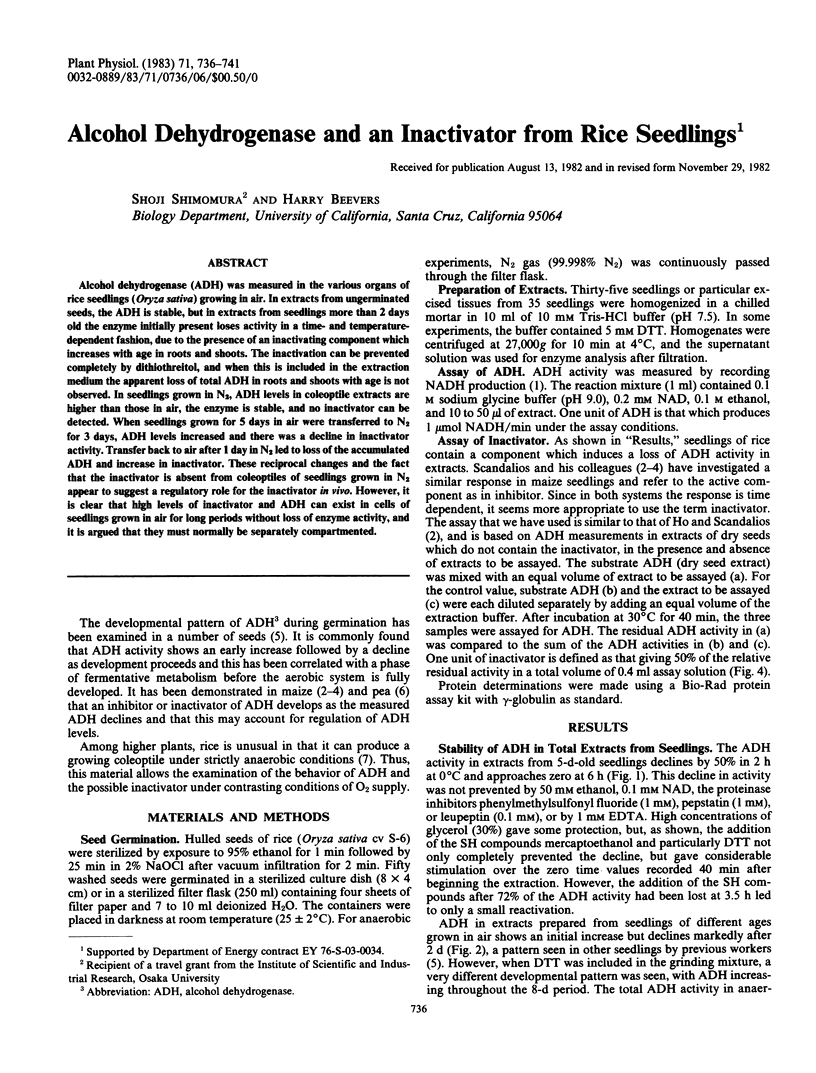
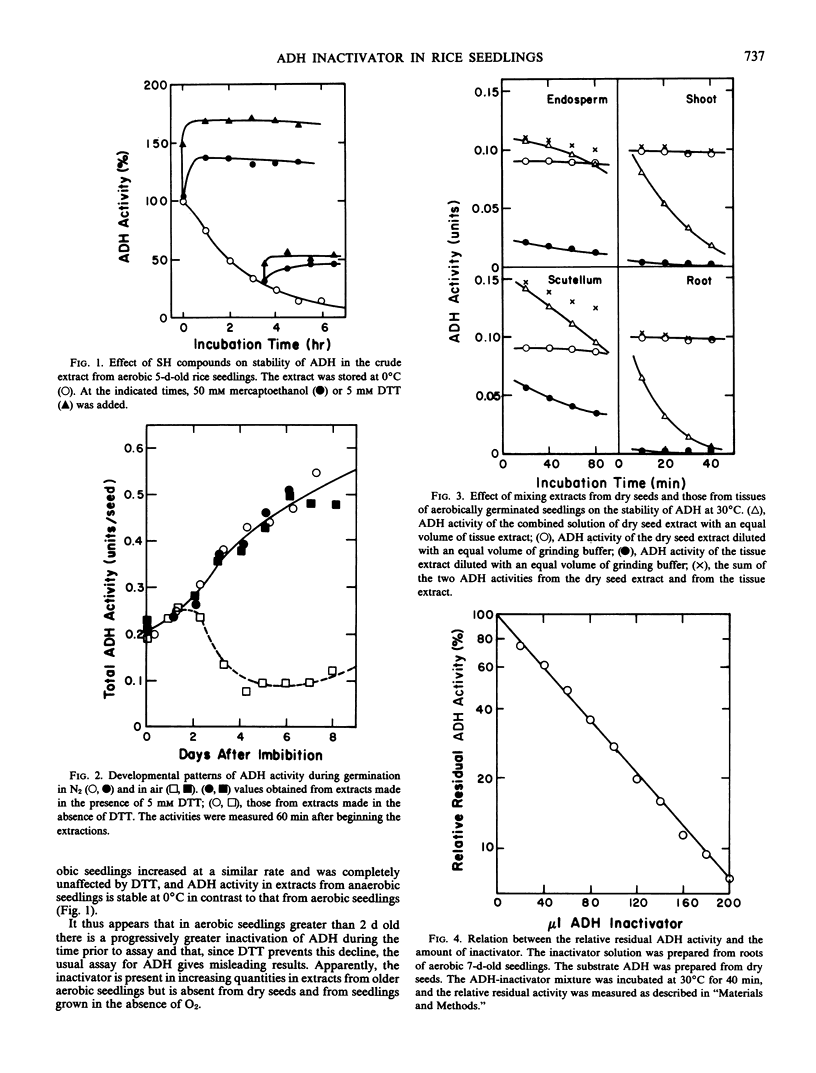
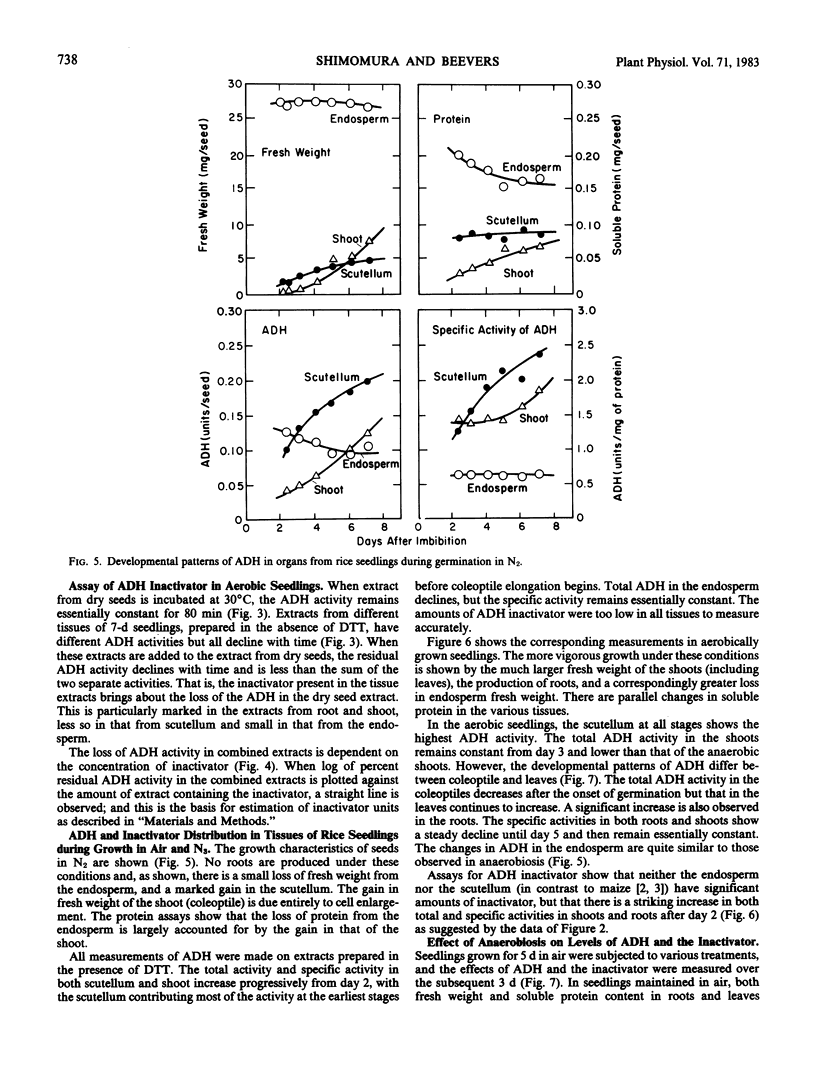
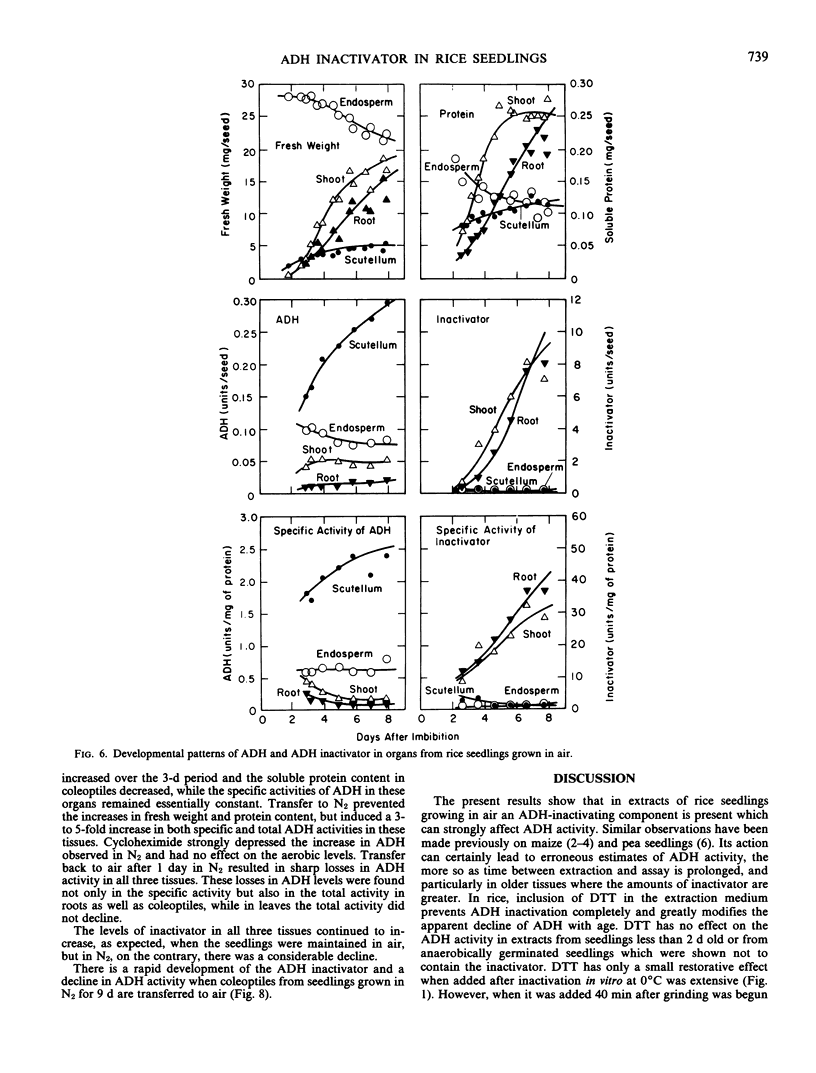
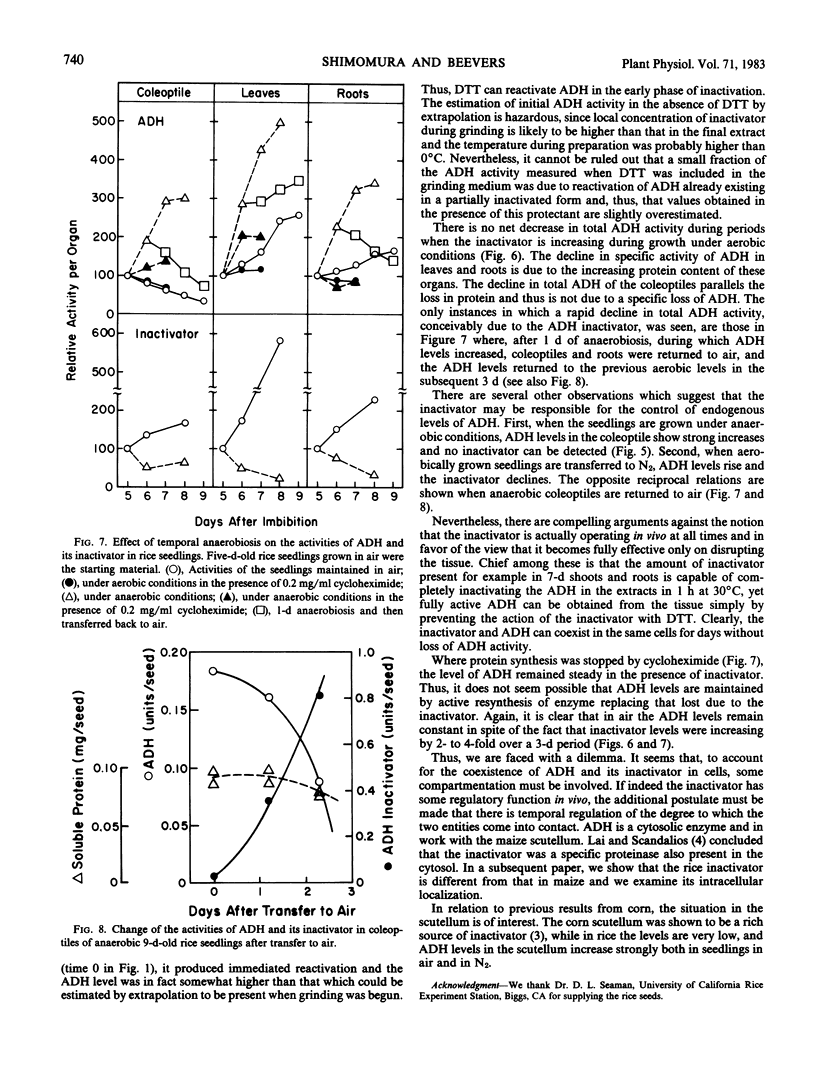

Selected References
These references are in PubMed. This may not be the complete list of references from this article.
- Ho D. T., Scandalios J. G. Regulation of Alcohol Dehydrogenases in Maize Scutellum during Germination. Plant Physiol. 1975 Jul;56(1):56–59. doi: 10.1104/pp.56.1.56. [DOI] [PMC free article] [PubMed] [Google Scholar]


